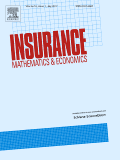
INSURANCE MATHEMATICS & ECONOMICS
Scope & Guideline
Pioneering research at the crossroads of mathematics and finance.
Introduction
Aims and Scopes
- Stochastic Modeling in Insurance:
The journal extensively publishes research on stochastic processes and models to analyze various insurance phenomena, such as claim frequency and severity, mortality rates, and investment strategies. - Risk Management Techniques:
A significant focus is placed on developing and refining methodologies for effective risk management, including reinsurance strategies, optimal investment approaches, and the evaluation of insurance contracts under uncertainty. - Mathematical and Statistical Methods:
The use of advanced mathematical techniques, including regression models, copulas, and Bayesian methods, is prevalent in the journal, facilitating rigorous analysis and decision-making in insurance economics. - Behavioral Economics in Insurance:
The journal explores how behavioral aspects influence insurance decisions, such as risk aversion and moral hazard, integrating psychological insights with mathematical modeling to inform policy design. - Innovative Insurance Products:
Research often revolves around the design and valuation of novel insurance products, including variable annuities and long-term care insurance, addressing contemporary market needs and regulatory challenges.
Trending and Emerging
- Machine Learning and Data Analytics:
There is a growing emphasis on the application of machine learning and data analytics in insurance, particularly for claim prediction, risk assessment, and enhancing customer insights, showcasing the industry's shift towards data-driven decision-making. - Longevity Risk and Aging Populations:
Research focusing on longevity risk management is increasingly prevalent, driven by demographic shifts and the need for sustainable pension systems, highlighting the importance of effective strategies to address the financial implications of aging populations. - Behavioral Insights in Insurance Decisions:
Emerging studies are exploring the behavioral aspects influencing insurance decisions, such as risk perception and decision-making biases, which are critical for designing more effective insurance products and marketing strategies. - Cyber Risk and Insurance Solutions:
With the rise of digital threats, there is an increasing focus on cyber risk modeling and insurance solutions tailored to address the unique challenges posed by cybersecurity, reflecting the growing importance of this area in the insurance landscape. - Regulatory and Economic Impacts on Insurance Markets:
Research is increasingly examining the effects of regulatory changes and economic conditions on insurance markets, emphasizing the need for adaptable strategies that align with evolving legal and economic frameworks.
Declining or Waning
- Traditional Life Insurance Models:
There has been a noticeable decrease in studies focused on traditional life insurance models, as researchers increasingly favor more complex and adaptable frameworks that incorporate stochastic elements and behavioral factors. - Static Risk Assessment Models:
Static models that do not account for dynamic changes in risk factors are becoming less frequently published, as the field moves towards more robust, time-consistent approaches that incorporate real-time data and evolving market conditions. - Generalized Linear Models (GLMs):
The use of generalized linear models for insurance claims analysis has decreased, likely due to the emergence of more sophisticated machine learning techniques that provide greater flexibility and predictive power. - Deterministic Approaches to Pricing:
Deterministic pricing models are seeing reduced interest as the focus shifts to stochastic and dynamic pricing strategies that better reflect market volatility and uncertainty.
Similar Journals

Mathematics and Financial Economics
Pioneering Research in Quantitative Finance and EconomicsMathematics and Financial Economics, published by Springer Heidelberg, is a leading peer-reviewed journal that explores the intersections of mathematical theories and financial practices. With an ISSN of 1862-9679 and an E-ISSN of 1862-9660, the journal has made notable contributions to its field since its inception in 2007, with a convergence period extending until 2024. Positioned in the prestigious Q2 category for both Finance and Statistics and Probability, the journal is ranked within the top 66th percentile in Mathematics and Statistics and the 62nd percentile in Decision Sciences according to Scopus metrics. Researchers and professionals looking for high-quality, innovative research in mathematical finance will find valuable insights within its pages. Although primarily a subscription-based journal, it aims to foster knowledge sharing among academia and industry experts. Its commitment to advancing quantitative methods and financial applications solidifies its importance as a resource for students, researchers, and practitioners dedicated to understanding and navigating the complex dynamics of financial markets.

Connecticut Insurance Law Journal
Navigating the Evolving Landscape of Insurance PolicyWelcome to the Connecticut Insurance Law Journal, an esteemed academic publication dedicated to advancing scholarship in the field of insurance law. Published by the University of Connecticut School of Law, this journal aims to provide a platform for researchers, practitioners, and students to explore contemporary issues and emerging trends in insurance legislation and policy. The journal, bearing the ISSN 1081-9436, offers a valuable resource for those invested in legal studies, featuring contributions from prominent scholars and professionals. While it does not operate under an Open Access model, readers can expect high-quality articles that delve deep into critical legal analyses, case studies, and discussions that shape insurance law practices today. As insurance law continues to evolve in response to economic and social changes, the Connecticut Insurance Law Journal is essential for those seeking to stay informed and engaged in this vital area of study.
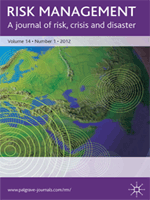
Risk Management-An International Journal
Pioneering Research in Risk and ResilienceRisk Management - An International Journal is a premier publication dedicated to advancing the understanding and methodologies of risk management across various sectors, including business, finance, and economics. Published by Palgrave Macmillan Ltd in the United Kingdom, this journal not only maintains a robust presence in the scholarly community but also ranks in the Q2 category for Business and International Management and Finance, as well as Q3 for Economics and Econometrics and Strategy and Management. With its diverse scope and commitment to high-quality research, the journal provides essential insights for academics, practitioners, and students alike, helping to shape the future of risk management practices globally. While not an open-access journal, its rigorous peer-review process ensures that only the most impactful and relevant studies are featured. Covering topics that converge the years from 2006 to 2024, Risk Management represents a vital resource for those looking to deepen their knowledge in this critical field.
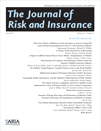
JOURNAL OF RISK AND INSURANCE
Shaping the discourse on risk management excellence.JOURNAL OF RISK AND INSURANCE, published by Wiley, stands as a premier platform for advancing knowledge in the fields of risk management and insurance. With an established ISSN of 0022-4367 and an E-ISSN of 1539-6975, this journal is rigorously peer-reviewed, ensuring the highest standards of academic quality. Recognized as a Q1 journal in 2023 across multiple categories such as Accounting, Economics, and Finance, it showcases influential research that addresses complex issues within these domains. The journal is notable for its innovative contributions and is essential reading for researchers, professionals, and students dedicated to understanding the evolving landscape of risk and insurance from 1978 to the present. Although not an Open Access journal, it provides valuable insights for those aiming to enhance their expertise while navigating the intersection of theory and practice.
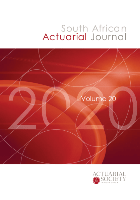
South African Actuarial Journal
Connecting theory and practice in the actuarial landscape.Welcome to the South African Actuarial Journal, a premier publication dedicated to advancing the field of actuarial science within the South African context and beyond. Published by the Actuarial Society of South Africa (ASSA), this journal serves as a vital platform for researchers, practitioners, and students to disseminate their findings, share innovative methodologies, and discuss contemporary challenges in actuarial practice. With an ISSN of 1680-2179, the journal encompasses a wide range of topics including risk management, insurance, pensions, and financial mathematics, making it an essential resource for those engaged in quantitative risk analysis. Although currently lacking an open access model, the journal's rigorous peer-review process ensures that all published articles maintain a high standard of quality and relevance. Engaging with the South African Actuarial Journal allows readers to stay at the forefront of developments in actuarial science, contributing to the profession's evolution and effectiveness in addressing the complexities of modern risk environments.

Journal of Risk
Empowering Research on Strategic Risk ManagementJournal of Risk, published by INCISIVE MEDIA, serves as an essential platform for scholars and practitioners in the fields of finance and strategic management. With an ISSN of 1465-1211 and an E-ISSN of 1755-2842, this journal explores the multifaceted nature of risk, encompassing theoretical frameworks, empirical investigations, and practical applications. Although currently classified in Q4 for both Finance and Strategy and Management categories as per 2023 standards, it provides a crucial forum for innovative research and thought leadership, addressing the challenges faced in understanding and managing risk in today’s dynamic environment. The journal, based in the United States, is committed to advancing knowledge and offering a platform for debate and dialogue in its convergence years from 2011 to 2024. Researchers, professionals, and students are encouraged to contribute their insights to enhance the academic discourse surrounding risk management.
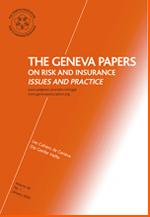
GENEVA PAPERS ON RISK AND INSURANCE-ISSUES AND PRACTICE
Advancing the Frontiers of Risk and Insurance KnowledgeGENEVA PAPERS ON RISK AND INSURANCE-ISSUES AND PRACTICE is a leading academic journal dedicated to advancing the fields of risk management and insurance, published by the esteemed Palgrave Macmillan Ltd. With an ISSN of 1018-5895 and an E-ISSN of 1468-0440, this journal serves as a pivotal platform for sharing cutting-edge research and practical insights addressing a diverse range of issues within the insurance sector. Established in 1999, it spans a wide array of topics, including risk assessment, financial implications, and policy development, contributing to its recognition in the Q2 quartile across multiple categories such as Accounting and Economics. With a notable Scopus ranking reflecting its relevance—ranked #229/716 in Economics and Econometrics, and #106/317 in Finance—it provides invaluable resources for scholars, professionals, and policymakers alike. Despite being a non-open-access journal, the GENEVA PAPERS ensures a rigorous peer-review process, aiming to uphold the highest standards of scholarly publication. Whether you are a researcher looking to publish groundbreaking studies or a practitioner seeking the latest trends and analyses in the insurance landscape, this journal stands out as an essential resource in the domain.
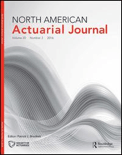
North American Actuarial Journal
Exploring the Frontiers of Actuarial ScienceNorth American Actuarial Journal is a prominent publication in the fields of Economics and Econometrics, Statistics and Probability, and Statistics, Probability and Uncertainty, published by Routledge Journals, Taylor & Francis Ltd. The journal, with the ISSN 1092-0277 and E-ISSN 2325-0453, covers critical advancements in actuarial science over the years from 1997 to 2024. With a strong Q2 ranking in multiple categories for 2023, the journal positions itself as a vital resource for researchers and practitioners looking to stay abreast of current trends and methodologies in actuarial practices. The journal’s focus on providing a platform for high-quality research makes it indispensable for professionals and academics alike, offering insightful contributions that influence the actuarial field's evolution. While it currently does not offer open access options, its rigorous peer-review process ensures the integrity and relevance of its published works. Researchers, professionals, and students in actuarial science will find this journal to be a valuable asset for both their studies and professional development.

Revue de l IRES
Fostering Dialogue in Economics and Social ResearchRevue de l'IRES is a distinguished journal published by the Institut de Recherches Économiques et Sociales (IRES), specializing in economic and social sciences. With the ISSN 1145-1378, this journal contributes significantly to the academic discourse by publishing high-quality research that addresses contemporary issues in the field. Although it does not currently operate under an Open Access model, it provides valuable insights through its rigorous peer-review process, ensuring the integrity and scholarly quality of its content. The journal is based in France, with its operations centered at 16 Boulevard Mont Est, 9ième étage, Noisy-le-Grand. Researchers, professionals, and students are encouraged to engage with the research published in Revue de l'IRES, which serves as a critical platform for advancing knowledge and policy-oriented discourse in economics and social sciences.
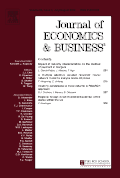
JOURNAL OF ECONOMICS AND BUSINESS
Navigating the Intersection of Theory and PracticeJOURNAL OF ECONOMICS AND BUSINESS, published by Elsevier Science Inc, stands as a leading platform for the dissemination of research in the fields of economics and business management. With an ISSN of 0148-6195, this journal is indexed in Scopus and boasts impressive rankings, including a position in the top 20% for both Finance and Economics and Econometrics. With a consistent publication history since 1978, it has become a vital resource for scholars and practitioners alike, providing insights into contemporary issues and emerging trends in the economic landscape. The journal, categorized in the Q2 quartile for both Business and Economics, invites rigorous research that advances theoretical and practical knowledge. While it operates under a subscription model, its notable impact factor reflects its significance and relevance in addressing critical questions within the business and economics domains. Whether you are a researcher, a business professional, or a student eager to deepen your understanding, the JOURNAL OF ECONOMICS AND BUSINESS is an essential resource for your academic and professional journey.